What is Siddhasana (The Accomplished Pose)
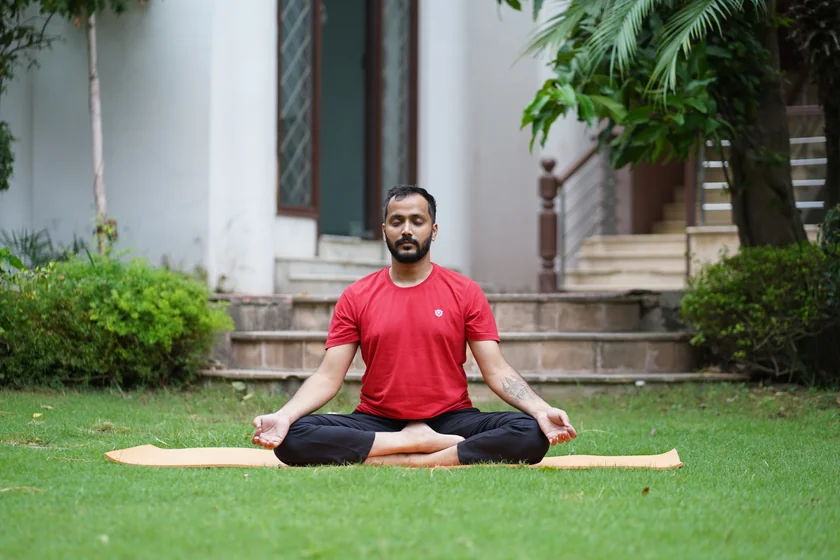
Siddhasana is a seated position that is typically used for meditation. In Siddhasana, you can practice yoga sequences that include meditation and pranayama. Siddhasana, unlike any other seated yoga pose, requires a deeper flexion of the knees, ankles, glutes, and internal rotation of the hips.
Overview & Etymology
Overview
The name Siddhasana is derived from the Sanskrit words Siddha, which means “perfect” and “adept,” as well as Asana, which means “posture” or “seat.”
Siddhasana is one of the ancient yoga asanas, having been mentioned as a meditation posture in the Goraksha Sataka 1.10-12 of the 10th century. It is said that, together with the lotus pose, Siddhasana is the most essential of the asanas, as it opens the door to liberation.
The asana is mentioned in the Hatha Yoga Pradipika 1.37–45 from the 15th century. It calls Siddhasana “the king of all asanas" and “the opening of the door of salvation,” stating that the pose “cleanses the impurities of 72,000 Nadis,” or subtle bodily channels.
Sanskrit Name: सिद्धासन Pronunciation: Si-ddah-aa-sun-aa
Pose Type: Seated Also known as: Accomplished Pose
Strengthens: Mind, Back and Hips Stretches: Back, Knees and Ankles
Health Benefits of Siddhasana
Stimulates the flow of Prana in the body.
Enhances focus, concentration, and a mindful thought process.
It has a calming and relaxing effect on the entire nervous system.
Activates chakra healing by stimulating Muladhara (Root) and the Ajna (Third Eye) Chakra.
When to Avoid Performing Siddhasana?
Avoid if you have arthritis.
Avoid if you have sciatica pain.
Avoid if you have an injury or recent surgery.
Avoid if you are pregnant with back pain and foot swelling issues.
How to do Siddhasana (Accomplished Pose)
Below are some vital warm-up steps, posture cues, and related relaxation positions recommended by yoga teachers that offer numerous benefits in opening the pelvic muscles before beginning the Siddhasana practice, and keeping your legs safe post-practice.
Part 1 - Preparatory Poses for Siddhasana
Flexing the hips and ankles is vital in the practice of Accomplished Pose, which allows students to sit for extended periods for meditation.
The following are a few preliminary poses for warm-up, which helps in opening the lower body before the main practice:
1. Ankle Rotations - Sit or stand to move the feet and ankles in circular motions, both clockwise and counter-clockwise. This will enhance the blood circulation in the foot and help prepare your ankles for the seated pose.
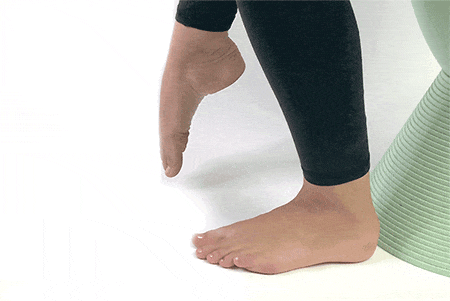
2. Sukhasana (Easy Pose) - Sukhasana is a meditative stance in which the legs are crossed in the most basic formation, unlike other meditative poses. It’s a warm-up yoga stance that gets the lower body ready for more rigorous yoga poses and yoga flows. Also, it aids in the development of hip and lower back endurance and stability.
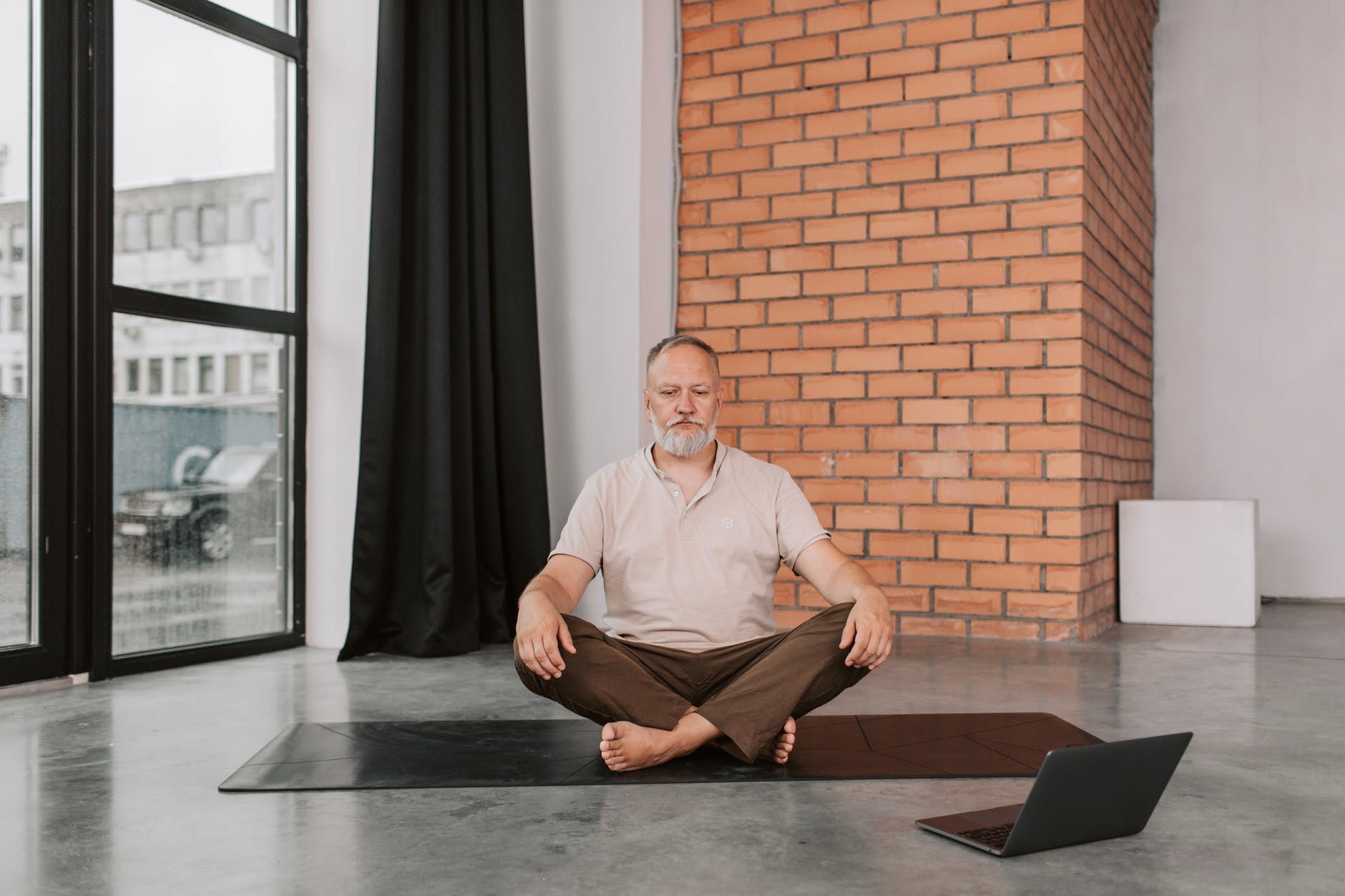
3. Baddha Konasana (Bound Angle Pose) - Bound Angle Pose is a hip-opening posture that strengthens the pelvic floor, psoas, and hip flexors while stretching the groin, abductors (inner thighs), and knees. Also, the spine can be lengthened and decompressed as the hip flexor muscles soften up in this pose.
Part 2: Step-by-Step Instructions to Perform Siddhasana
The steps for obtaining an accomplished pose position can be found below:
Step 1: Take a seated, upright stance on the floor.
Step 2: Spread your legs a foot apart in front of you.
Step 3: Bend your left leg from the knee so that the sole of your left foot can rest against the inside of your right thigh.
Step 4: At the knee, bend the right leg and insert the foot between the left leg’s thigh and calf.
Step 5: With your spine erect, rest the wrists of both hands on the corresponding knees. Here, take a few deep breaths.
Step 6: Sit in this deep meditative position for as long as you feel comfortable.
Breath Awareness: Throughout the practice, follow a steady pace while breathing continuously. Make sure to inhale deeply and exhale twice the size you inhale.
Performance Duration for Beginners: Sit and hold Siddhasana pose for 5-10 minutes.
Performance Duration for Advanced: Sit and hold for as long as you wish to meditate in the Accomplished Pose.
Part 3: Things to Keep in Mind
The hip joint is the only joint that rotates here, and it can only rotate when the knees are flexed. So, make sure the hip joint can rotate safely when the knees are flexed.
Also, a few added elements must be considered while doing yoga, in order to avoid knee strain or knee pain:
Have a basic level understanding of how your joints are intended to move.
Understand the difference between pain and stress/discomfort.
If you feel any unnecessary pressure stop performing the practice.
The same leg crossed for too long- To properly complete Siddhasana, you must alternate which leg you cross on top each time, that way you can keep the blood flowing smoothly in both legs.
Forcing your knees to go down - Do not force your knees down closer to the floor if you’re new to this position or have limits in your hips or knees. Only descend to the depths to which you are at ease. If you can’t get your knees into a comfortable posture, sit on a cushion or a folded blanket. This will relieve some of the strain on your knees and hips.
Avoid upper and lower back rounding - The success of this asana depends on having a straight and upright posture with a flat back and long spine, especially during long meditation periods. So, consider sitting with your back straight against a wall if you tend to round your lower back.
Part 4: Relaxing Poses After Siddhasana
Relaxing after a long sitting session in Siddhasana can be helpful to regain blood circulation back around the legs and hip muscles. Here are a few counter yoga poses for relaxation after your Accomplished Pose practice.
1. Paschimottanasana (Seated Forward Bend Pose): Relax the body by spreading your legs out in front of you and taking a few deep breaths while keeping the spine straight, especially after a long practice of seated Meditation or Pranayama in this pose.
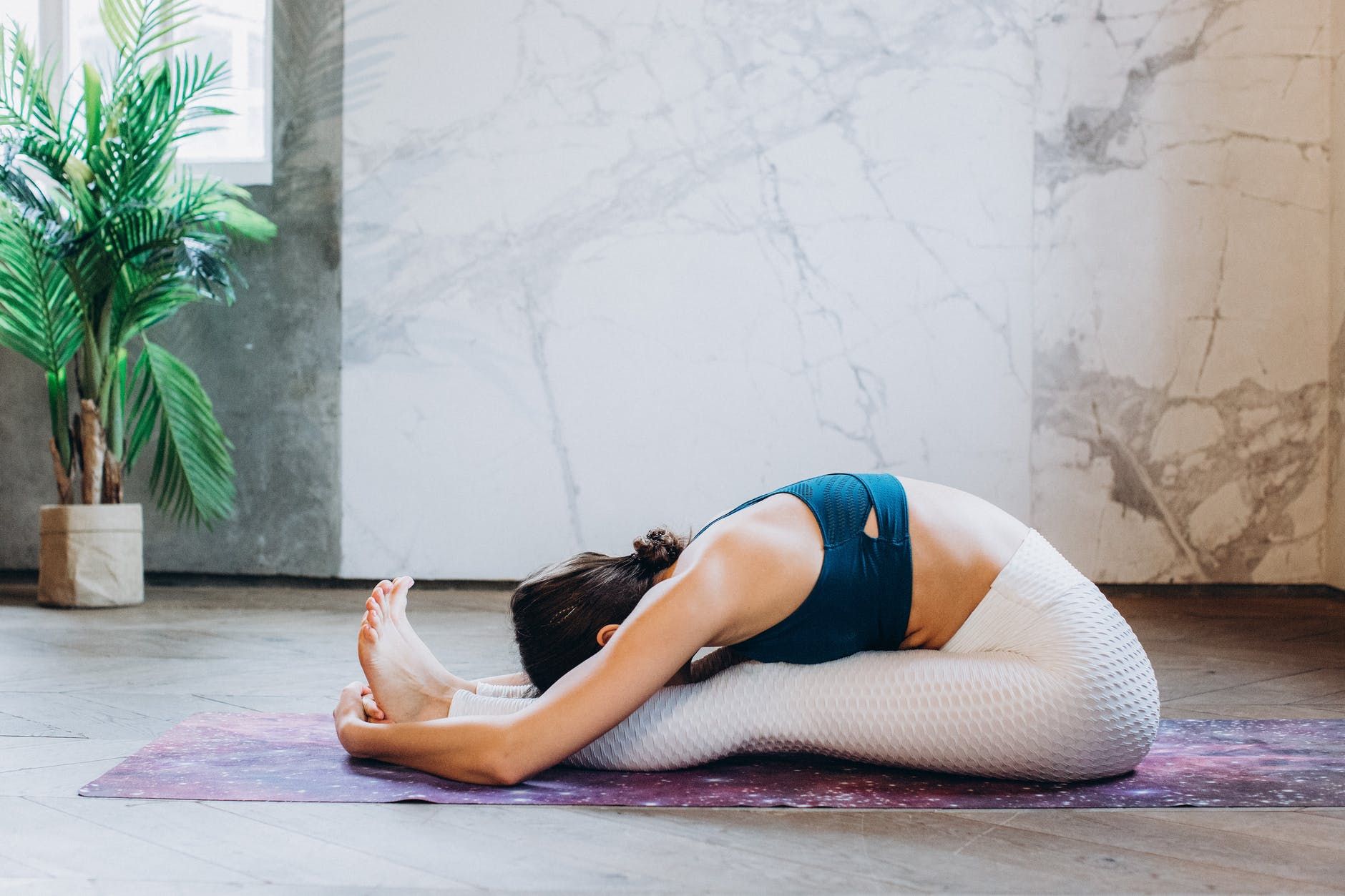
Inhale and lift your entire body forward and bend down, place your chest close to your thighs and your face resting on your knees. This position will help circulate blood back to the legs by relaxing the entire spine and hips.
2. Savasana (Corpse Pose): After using Siddhasana as a deep meditation yoga pose, relaxing in Savasana is a great way to release all the tension from the spine, legs, knees, and glute muscles. To bring the energy back into the body, lie down in Savasana and recite the “Om” mantra for approximately 12 rounds.
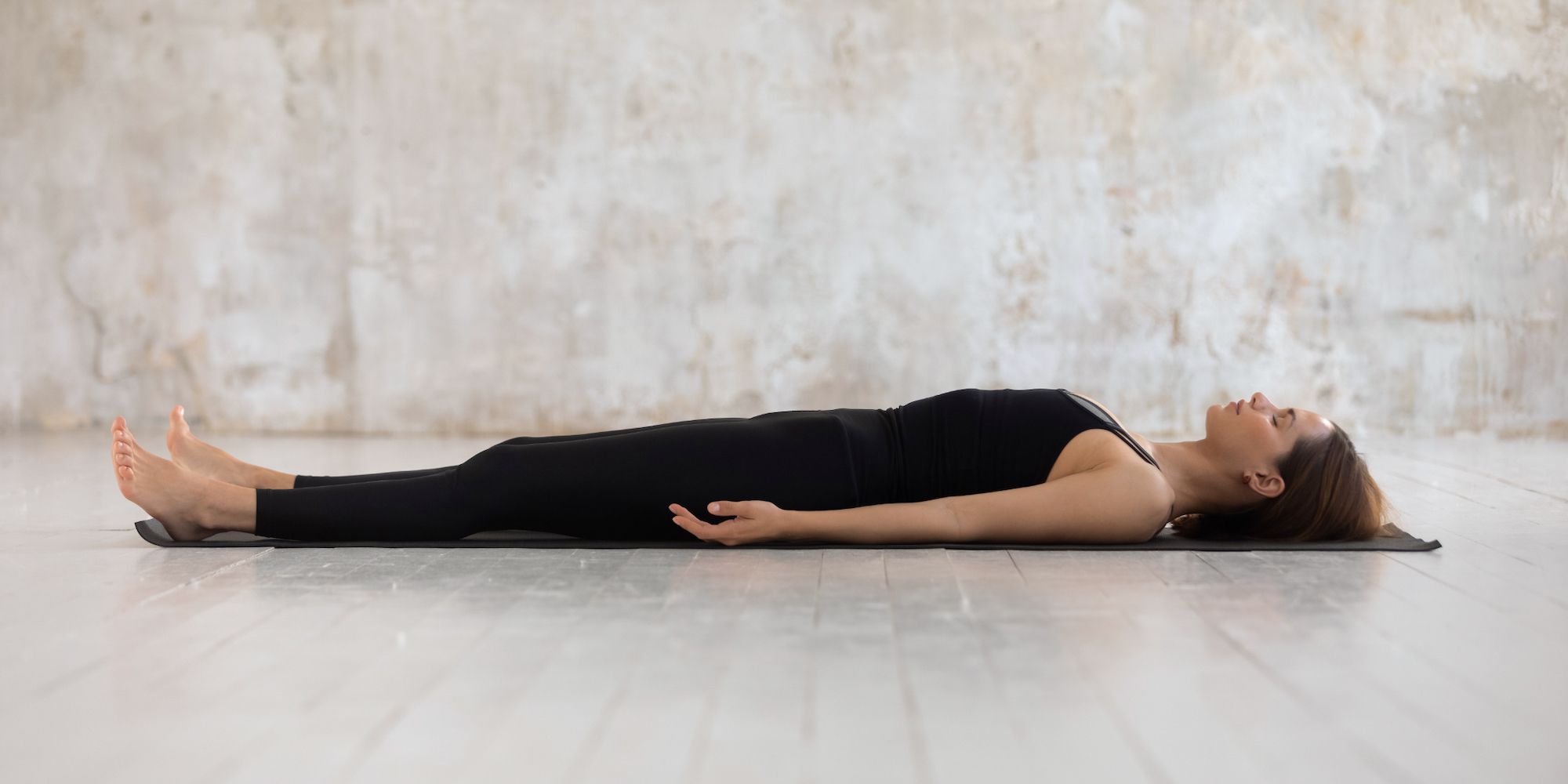
Learn Meditation with guidance from an expert coach!

Meditation for Deep Relaxation and Mindfulness

Breathing and Meditation for Relaxation and Well-being
Siddhasana Variations to Consider
- Stay seated for long durations: As Siddhasana is a seated yoga posture widely used for meditation, holding it for prolonged periods is the only approach to make it more challenging.

Image Credits: huggermugger.com
When holding the posture for an extended amount of time, it's necessary to be mindful of the body's alignment. Now, you can begin with short increments of duration and gradually increase the sitting duration as you get more comfortable with the pose.
Because Siddhasana requires strict spine posture, you can make this practice more challenging by focusing on sitting tall and erecting your spine for long durations.

Enjoy a Free 1-on-1 Session with a Coach!
Receive personalized guidance tailored to your unique fitness goals, live with a dedicated coach—no credit card required.
Frequently Asked Questions about Siddhasana
The use of Siddhasana is for meditation since it can be held for long periods. It’s also a perfect yoga pose for increasing lower body muscular flexibility of the hip, groin, and inner thigh.
The main benefits of Siddhasana are that hips, adductors, knees, and ankles are stretched in this stance. It also helps transmit energy from your lower body upward into the spine, resulting in a strong back, erect posture, and long spine when done correctly.
To perform Siddhasana, sit on the floor with your legs crossed. Place the left foot on top of the lower abdomen. Place the right foot over the top of the left foot. Make sure your knees are on the ground, and your spine is tall.
Ardha is a Sanskrit word for half, and Ardha Siddhasana is the half-seated posture stance for Siddhasana. This pose is beneficial if you’re a beginner, or if you find it difficult to stretch and clasp the legs together in complete Siddhasana. Ardha Siddhasana is a modification for Accomplished Pose.
The difference between Siddhasana and Sukhasana is that the legs are clasped with one another in Sukhasana. Whereas the feet are substantially closer to the groins in Siddhasana posture. The feet are locked inside the calf and thigh region, and the knees are wider. It requires wider hips and more flexible ankles.



.webp)
%20(7).jpg)




